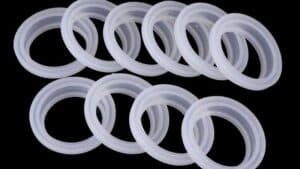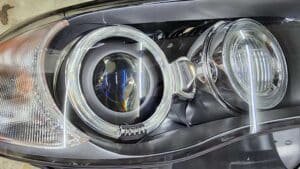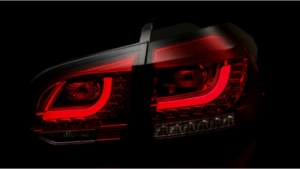Rear fog lights play an important role in road safety. This article offers a comprehensive guide to everything you need to know about rear fog lights.
What Are Rear Fog Lights?
A rear fog light is a high-intensity red light positioned at the rear of a vehicle, typically on the driver’s side or both sides, integrated into or below the tail light cluster. Unlike the normal taillights that emit a dimmer glow, rear fog lights shine more intensely to penetrate thick atmospheric conditions, such as dense fog, heavy rain, or snow. They are a specific category of auto fog lights designed for rearward visibility.
Benefits of Rear Fog Lights
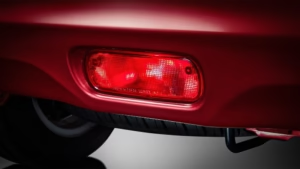
The back fog light offers a suite of advantages that make it indispensable for safe driving in adverse conditions. Here’s why every vehicle should be equipped with this feature:
Enhanced Safety: The rear fog light significantly reduces the risk of rear-end collisions by making the vehicle visible in low-visibility conditions.
Regulatory Compliance: In regions like the EU and UK, equipping vehicles with a rear fog lamp is a legal requirement, ensuring compliance with stringent road safety standards. Non-compliance can lead to fines or failed vehicle inspections.
Driver Confidence: Knowing your car rear fog lamp is active empowers you to navigate challenging weather with assurance, fostering a safer driving environment for all.
Complementary Functionality: While headlights illuminate the road ahead, they can falter in fog due to light scattering. The fog rear light, with its focused red beam, complements these systems by ensuring rearward visibility.
Types of Rear Fog Lights by Light Source
There are three main types of back fog lights based on the kind of light source used. Each has unique characteristics affecting brightness, longevity, and energy efficiency.
Halogen Rear Fog Lights
Halogen fog lights are the most traditional and cost-effective option. They use halogen gas combined with a tungsten filament to emit light. Widely used in budget-friendly vehicles, they provide reliable performance but consume more energy than modern alternatives.
Xenon (HID) Rear Fog Lights
Xenon or High-Intensity Discharge (HID) lights use high-intensity discharge technology to produce an intense red beam. While offering exceptional brightness, their higher cost and complexity make them a niche choice.
LED Rear Fog Lights
LED (Light Emitting Diode) rear fog lights represent the most advanced technology currently available. LEDs are highly energy-efficient, last significantly longer than halogen and xenon lamps, and produce instantly bright, focused light that is excellent for cutting through poor visibility. Despite higher upfront costs, their durability and energy savings often justify the investment.
Usage Guidelines for Rear Fog Lights
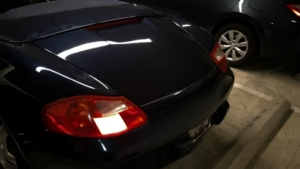
Proper use of the rear fog light is critical to maximize safety and avoid misuse. Here are key guidelines:
When to Turn On Rear Fog Lights
Turn on your rear fog lamp only when visibility drops below 100 meters (328 feet), such as in dense fog, heavy rain, or snow.
When to Turn Off Rear Fog Lights
Once visibility improves, or if you move into clearer weather or back into well-lit urban areas, switch off your rear fog light. Keeping it on unnecessarily can dazzle or distract other drivers, creating a hazard.
Avoid Confusion with Brake Lights
Since rear fog lights emit a bright steady red light, they can sometimes be mistaken for brake lights. This confusion can lead to unsafe braking patterns among following drivers. Using only one rear fog lamp (usually on the left), as legally recommended in several countries, helps reduce this risk.
Operational Tips
Familiarize yourself with your vehicle’s rear fog light switch, often located on the headlight stalk or dashboard. Regularly check that the light is functional, as a dirty or broken back fog light compromises safety.
Choosing the Right Rear Fog Lights for Your Vehicle
Selecting the ideal rear fog light need to balance safety, compliance, and aesthetics. Here are key considerations:
- Regulatory Compliance: Ensure the car rear fog lamp meets regional standards. Verify that the light emits red, per global standards.
- Vehicle Compatibility: Match the fog rear light to the vehicle’s rear design, considering size, mounting points, and wiring integration with existing tail light clusters.
- Light Source Selection: Choose between halogen, LED, or xenon based on cost and performance.
- Durability and Maintenance: Opt for weather-resistant back fog lights with durable lenses that are easy to clean, ensuring long-term reliability in harsh conditions.
- Aesthetic Integration: Align the rear fog lamp design with the vehicle’s aesthetic, ensuring a seamless look for premium or branded models.
Zhongren’s Customized Rear Fog Light Solutions
At Zhongren, our expertise lies in delivering high-quality, durable, weather-resistant custom plastic molding parts and seal parts for car rear fog lamps, tailored to meet the specific needs of customers. Contact Zhongren to explore our tailored rear fog light plastic components and assembly services, supported by advanced plastic molding capabilities.
FAQ
What is the difference between car fog lights and other rear lights?
Car fog lights serve a very specific purpose compared to other rear lights:
- Brake lights: Red, switch on automatically when the brake pedal is pressed, warning following drivers that the car is slowing down.
- Tail lights: Dimmer red lights that illuminate together with the headlights, showing the vehicle’s presence in normal night driving. Learn more in our car tail light guide.
- Reverse lights: White, activate automatically when the car is put into reverse gear, signaling that the vehicle is backing up.
- Rear fog lights: A brighter red light, switched on manually, used only in fog, heavy rain, or snow to keep the car visible to others in low-visibility conditions.
